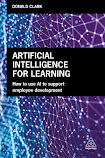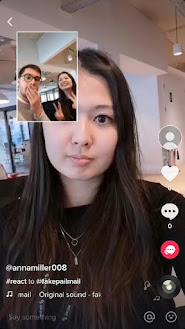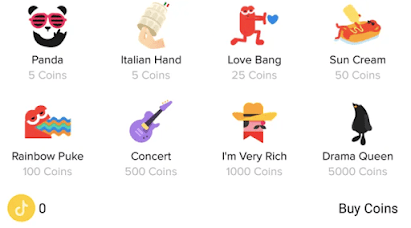TikTok; fascinating features for the future of learning…
Author: Donald Clark
Go to Source
Tik… Tok… the sound of the clock you used to hear in a room, when we had mechanical clocks. Isn’t it odd that a fantastically successful online service should be named after something users may never have actually heard, unless simulated digitally? To be fair it’s catchy and suggests time, a key feature of the platform, which delivers snappy, short videos.
My guess is that most teachers, lecturers and trainers have never used it, or only seen it over the shoulders of their kids. Yet, like YouTube, Facebook, Twitter and Instagram, it is insanely popular. I’ve written a lot about what we can learn about learning from social media – mobile, anywhere, anytime, engagement, feedback, chunked, reinforcement, practice, personalised, social, data-driven, AI-driven. These are the things learning theory points us towards, yet are so rarely used in teaching and learning. Yet services like these and more subject specific services, like Duolingo, point the way towards newer, more personalised, approaches to education and organisational learning.
Learning is now often driven by data and AI and looking these globally popular media services doesn’t suggest that this is how education and training will be delivered but they do have some very important pointers towards what is possible in delivery.
My contention, in my book ‘AI for Learning’ is that all online learning will eventually be dominated by AI, as smarter tech is needed to produce smarter people. Almost all informal, online learning uses data and AI. You search on Google or Google Scholar, find that YouTube video, get knowledge from your social media network, buy a book on Amazon – all mediated by data and AI. Even in formal online learning, personalised, adaptive systems, such as CogBooks.com, so good that the University who used it invested a seven figure sum in the platform, are being driven by data and AI techniques. Online content can be created by AI (wildfirelearning.co.uk) and AI is used to engage, support, deliver and assess learning in schools, Universities and the workplace.
TicTok AI and data driven
TikTok, for that matter all social media, would not exist of it were not for data and AI. Its user data fuels personalisation. Isn’t it odd that AI uses huge amounts of aggregated data from hundreds of millions, if not billions of users to, counterintuitively, fuel personalization? At that one moment when the system decides what you need, it brings the supermind of smart AI, combined with unimaginable amounts of harvested data, to deliver what it decides you are most likely to need at that one moment. It gets to knows your preferences, what you searched for, what you’ve ‘liked’, how long you watched, if you commented. These are all signs of interest – insights into you innermost thoughts. That’s what good teaching needs, insights into the individual minds of learners, not one-size-fits-all approaches to arbitrary sized classroom, lecture or course size groups.
Video
TikToks can be up to 15 seconds long, but you can connect multiple video clips together for up to 60 seconds of total recording. Longer videos, recorded separately outside of TikTok can also be uploaded. I’ve written a lot about using video for learning and TikTok’s use of video is both strength and a weakness. To be fair the videos are short – that is a blessing. But they are for fun, not serious learning tasks. Longer video needs further reinforcement due to the well-researched phenomenon of transitory forgetting while watching. We specialise in this with WildFire, where the video narration is grabbed and turned into active learning by AI, so you get the best of both worlds, the affective engagement of video plus effortful learning.
Nevertheless, the discipline of getting super-short videos for learning is an art form and check out some TikTok videos – they are often wonderfully concise and point the way towards the sort of learning support that an LXP may want to deliver for push or pull learning events in the workplace or practice and reinforcement in education.
Making TikToks
It’s so easy to make videos, just select 15 or 60 secs, point your camera and tap. Note that you can tap to start and stop therefore have a series of different shots. There’s also a Timer button on the right of the Camera screen to give yourself a few seconds before it starts recording. The app will continuously record for you. Then you use the Checkmark button to Preview your video, to add sounds, effects, text, and stickers. Tap Next and you’re done. Simply add a description, hashtags, and tag your friends, also choose who you want to view your post.
You have a Bookmark icon to see videos you’ve favourited, or have saved to watch later. You can even search by sounds and effects! Hashtags, however, are more popular and relevant for learning. Or you can re-visit videos you’ve liked by going to the section headed by a Heart icon. You can like, comment, save or download videos for offline viewing (if the creator allows). You may even be allowed to ‘duet’ or react to their TikToks. Then here are options to create a live photo or GIF from the video and share
Speed
The speed adjustments are fascinating. When you create a TikTok, a slider at the foot of the Camera screen allows you to record at .3x, .5x, 1x, 2x, or 3x speed. You can go to Effects > Time > Slow Motion, if you want to slow it down. The ability to speed up or slow down videos in learning allows the learner to see the process in slomo or faster for a quick overview. You can, for example, creating flashcard apps and revision test at different speeds.
Reactions and duets
Gifting
This may sound weird but TikTok has a alternative economy going on. You can actually buy gifts and gift to people you like. To get TikTok gifts, you must first purchase TikTok coins. These are available in different bundles, the bigger the bundle, the bigger the discount. They can’t be refunded or turned into cash.
However, you can send digital gifts and these can be turned by the recipients of these gifts, into diamonds, and diamonds can be turned into cash. Interesting model for getting learners in touch with brilliant teachers.
Accounts
You can set your account to private, save drafts for later posting and message. In other words, your content can only be seen by others you authorise. TikToks can be set to be viewed publicly, to friends or private separately. Of course, it has the now obligatory hashtag functionality. There’s a ‘live’ feature of you have over 1000 followers and Analytics are also available, who liked, commented or mentioned your TikToks.
Learning
Unsurprisingly, lots of detach companies have taken an interest and TikTok has initiated a partnership programme. You can use #EduTok to find this content. TikTok understand the importance of non-entertainment functions to consolidate their position. There’s some imaginative use around instruction and testing. What TikTok shows is that there is an insatiable appetite among the young to create, edit, add music and effects to video online. Every Instructional or Interactive Designer in the land should have TicTok on their smartphone. To develop these skills on micro-learning.
Conclusion
TikTok did something that was hinted at in the move towards massive YouTube use and Instagram… video. The internet is like a huge Darwinian environment where services go through a process of natural selection. The fittest survive, namely those with the most users. TikTok’s the result of that evolution. Rather than sneer at such apps, we need to reflect on what hey tell us about how technology can be used in learning. The lessons are clear. It has to be data and AI driven. Chunking matters and layers of social interaction, even payments, fuel use. The switch towards AI-driven learning is here… tic… tok…




